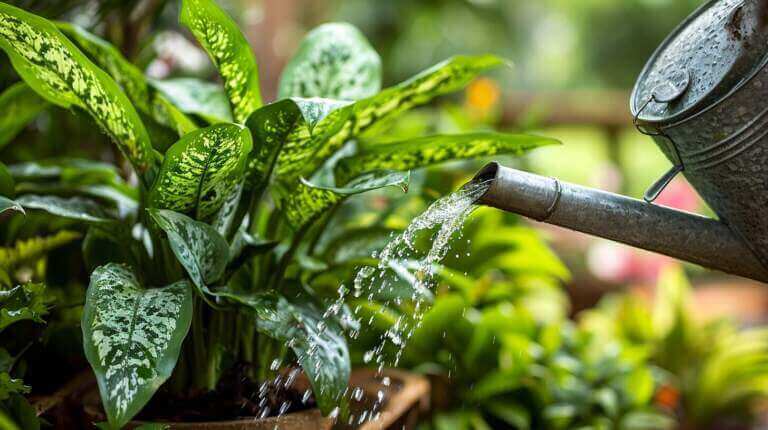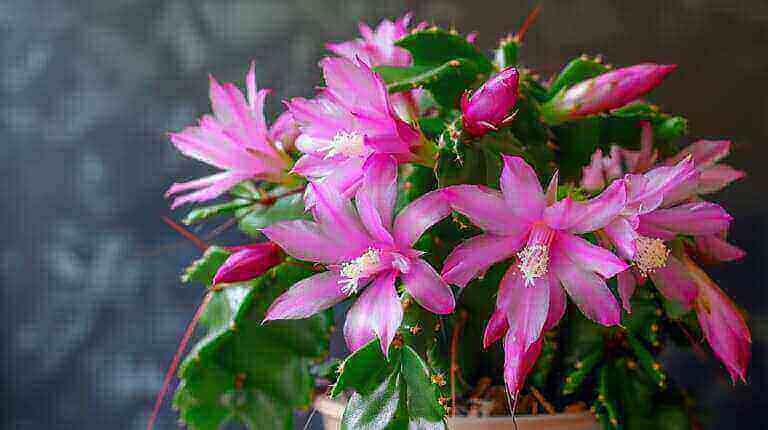How to Tell the Difference Between Pothos Vs Philodendron Plant
Are you a plant enthusiast or just curious about different types of houseplants? If so, you may have encountered the dilemma of distinguishing between pothos and philodendron.
These two popular indoor plants share some similarities, making it challenging to identify them accurately. However, fear not! In this article, we will provide you with expert insights and practical tips to help you tell the difference between pothos and philodendron with ease.
So, let’s embark on this informative journey and unravel the mysteries of these captivating foliage plants.
Key Takeaways
- Pothos plants have heart-shaped leaves while Philodendron plants have broader, more elongated leaves.
- Pothos leaves are smaller in size (2 to 4 inches) while Philodendron leaves can grow larger (up to 6 inches or more).
- Pothos leaves often have variegated patterns, while Philodendron leaves are usually dark green.
- Pothos plants have a trailing growth habit with long stems, while Philodendron plants have an upright growth habit with upward-growing stems.
Difference Between Pothos and Philodendron – Leaf Shape and Size
The leaf shape and size of both Pothos and Philodendron plants play a crucial role in distinguishing between the two species. While both plants have similar characteristics, there are subtle differences that can help identify them.
In terms of leaf shape, Pothos plants typically have heart-shaped leaves that are broader and rounder at the base, gradually tapering to a pointed tip. On the other hand, Philodendron plants have leaves that are usually broader at the base and more elongated, with a pointed tip.
Leaf size is another distinguishing factor. Pothos leaves are generally smaller, ranging from 2 to 4 inches in length and width, while Philodendron leaves can grow larger, reaching up to 6 inches or more in length and width.
Additionally, both Pothos and Philodendron plants exhibit unique leaf patterns and textures that further differentiate them. Pothos leaves often have variegated patterns, with splashes of different colors like green, yellow, or white. Philodendron leaves, on the other hand, tend to have a more solid color, usually dark green.
Philodendron and Pothos Growth Habit and Vine Structure
Pothos and Philodendron differ in their growth habit and vine structure, providing additional clues to distinguish between these two plant species.
Pothos plants have a more trailing growth habit, with long stems that drape down from hanging baskets or climb up trellises. They have aerial roots along their stems that help them cling onto surfaces for support.
On the other hand, Philodendron plants have a more upright growth habit, with stems that grow upwards and can reach impressive heights. They also have aerial roots, but they are not as prominent as in Pothos.
Understanding the growth habit and vine structure can be helpful in identifying these plants and determining the best propagation methods, as well as managing common pests and diseases that may affect them.
Now, let’s move on to the next section about leaf color and variegation.
Difference Between a Philodendron vs Pothos – Leaf Color and Variegation
When comparing Pothos and Philodendron, it is important to consider the differences in leaf color and variegation. Leaf color and variegation are key distinguishing factors between these two popular houseplants.
Pothos plants typically have leaves that are a vibrant green color, while Philodendron plants can have leaves that range from dark green to deep burgundy. Additionally, Pothos plants often exhibit variegation, which means their leaves have patches or streaks of different colors, such as white or yellow. On the other hand, while some Philodendron varieties may also display variegation, it is not as common as in Pothos plants.
Understanding the leaf color and variegation of Pothos and Philodendron can help plant enthusiasts identify and differentiate between the two.
In terms of propagation methods, both Pothos and Philodendron can be easily propagated through stem cuttings. Cut a healthy stem with a few leaves and place it in water or soil to allow it to develop roots. Both plants also have the ability to grow aerial roots, which can be used for propagation as well. Simply cut a stem with aerial roots and plant it in soil or water.
Both Pothos and Philodendron are relatively low-maintenance plants and are susceptible to common pests and diseases. Mealybugs, spider mites, and aphids are common pests that can infest both plants. Additionally, these plants can be prone to root rot if overwatered or if they are kept in poorly draining soil. It is important to regularly inspect the plants for any signs of pests or diseases and take appropriate measures to prevent or treat them.
Pothos and A Philodendron Care and Maintenance Tips
To ensure the health and vitality of your Pothos or Philodendron plants, proper care and maintenance are essential. Both plants have similar care requirements, making it easier for plant enthusiasts to provide the necessary conditions.
One of the most common problems faced by Pothos and Philodendron owners is overwatering. These plants prefer to dry out slightly between waterings, so it’s important to allow the top inch of soil to dry before watering again.
Another common issue is inadequate lighting. While Pothos can tolerate low light conditions, Philodendrons prefer bright, indirect light.
When it comes to propagation, both plants can be easily propagated through stem cuttings or by dividing the root ball.
With regular watering, proper lighting, and occasional fertilization, your Pothos or Philodendron plants will thrive in your home or office environment.
Frequently Asked Questions
Do Pothos and Philodendron Have Similar Light Requirements?
Do Pothos and Philodendron have similar light requirements? When it comes to thriving philodendron care tips, it’s important to note that both Pothos and Philodendron belong to the same family of plants. They share similarities in terms of light requirements. These plants prefer bright, indirect light and can tolerate lower light conditions. However, it’s crucial to avoid direct sunlight, as it can burn their leaves. Do Pothos and Philodendron have similar light requirements?
Can Pothos and Philodendron Plants Be Grown Outdoors?
Pothos and philodendron plants can be grown outdoors under certain conditions. Both plants thrive in warm climates with indirect sunlight and well-draining soil.
However, it is important to note that while philodendrons are more commonly grown as outdoor plants, pothos are typically grown as houseplants.
Outdoor cultivation of these plants requires careful consideration of temperature, humidity, and protection from extreme weather conditions.
Propagation techniques such as stem cuttings can be used to propagate both plants for outdoor cultivation.
Can Pothos and Philodendron Plants Be Propagated Easily?
Propagation of pothos and philodendron plants can be done easily using various methods. The key is to choose the right technique and follow best practices.
These may include using stem cuttings, air layering, or water propagation. Each method has its own advantages and disadvantages, so it’s important to understand the specific requirements of each plant.
What Are the Common Pests and Diseases That Affect Pothos and Philodendron Plants?
Common pests and diseases can greatly affect the health of pothos and philodendron plants.
Some common pests that attack these plants include spider mites, aphids, and mealybugs. These pests can cause damage to the leaves and stem, leading to stunted growth and wilting.
Additionally, diseases such as root rot and leaf spot can also pose a threat to the plants.
Preventive measures like regular inspection, proper watering techniques, and applying organic pesticides can help in managing these issues effectively.
Are Pothos and Philodendron Plants Safe for Pets?
When considering pet-friendly plants, it is important to determine whether pothos and philodendron plants are safe for pets.
Both plants are popular choices for indoor gardening, but they differ in terms of their toxicity to animals.
Pothos plants are considered mildly toxic to dogs and cats, while philodendron plants are toxic to both pets, causing digestive issues if ingested.
It is crucial to keep these factors in mind when selecting plants for a pet-friendly environment.
Can Pothos and Philodendron Plants Tolerate Low Light Conditions?
Proper lighting is crucial for the growth and well-being of pothos and philodendron plants. While they can tolerate low light conditions, it is essential to provide them with adequate indirect light to ensure optimal growth.
To create ideal low light conditions, place the plants near a north-facing window or provide artificial light using grow lights. Avoid placing them in direct sunlight, as it can lead to leaf burn.
Regularly monitor the lighting conditions and adjust as needed to maintain a healthy environment for these plants.
What is the difference between pothos and philodendrons?
Pothos and philodendrons are both popular houseplants but they have key differences. For instance, philodendrons have a sheath that falls off as the leaf matures, while pothos does not.
How can I tell the difference between a pothos plant and a philodendron?
One way to tell the difference is by looking at the leaves. Philodendron leaves are typically heart-shaped, while pothos leaves are more elongated.
What are the care requirements for pothos vs philodendron?
Both plants are easy to care for. They prefer indirect light and well-draining soil. However, philodendrons prefer more humidity than pothos.
What is a petiole and how does it differ in pothos and philodendrons?
A petiole is the stalk that attaches a leaf to the main stem of the plant. In philodendrons, the petiole is grooved and longer compared to that of pothos.
How do aerial roots differ in pothos vs philodendron?
Both plants have aerial roots, but they are more prominent in philodendrons. These roots help the plant absorb moisture and nutrients from the air.
What are some popular varieties of pothos and philodendrons?
Some popular varieties of pothos include golden pothos, marble queen pothos, and satin pothos. Popular varieties of philodendrons include heartleaf philodendron and vining philodendron.







